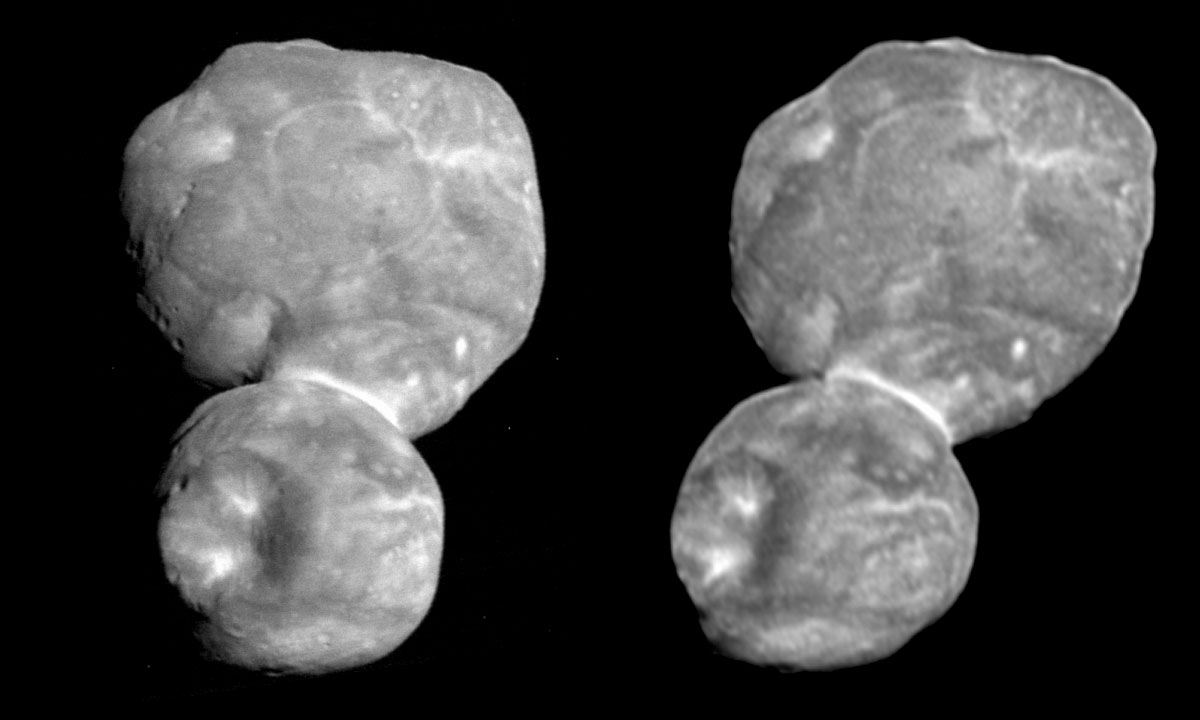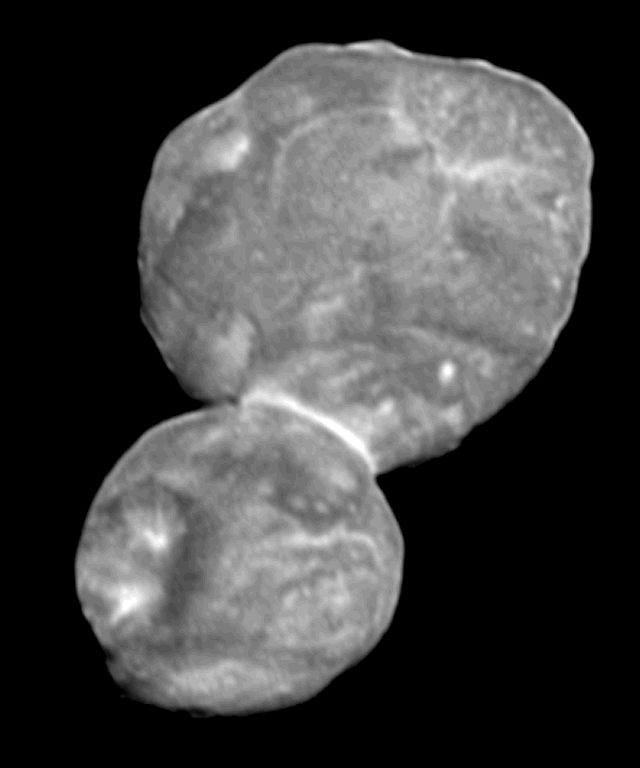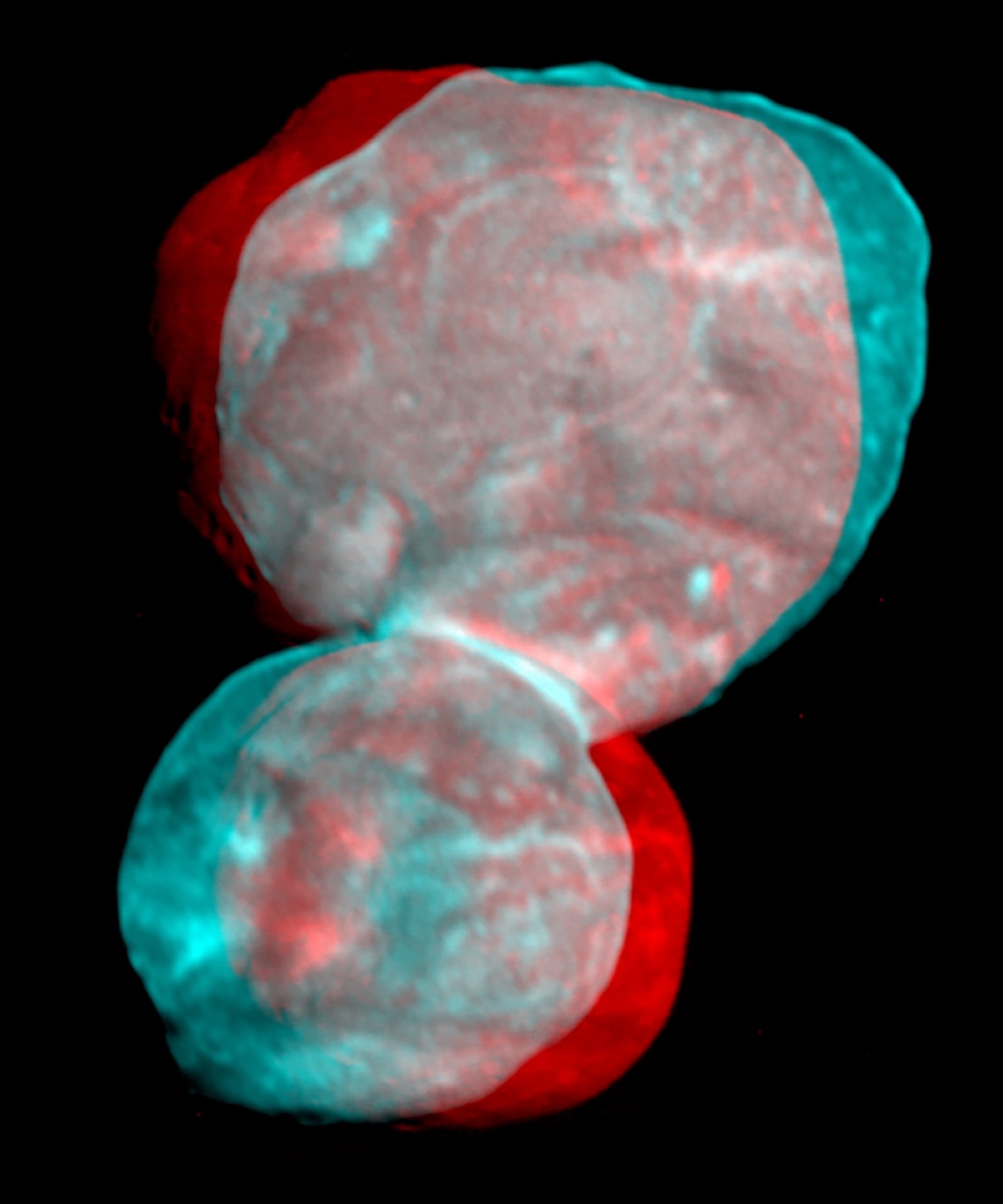Ultima Thule Pops in 3D in This Incredible New Horizons View

The New Horizons spacecraft is speeding away from its recent flyby target, a distant icy space rock nicknamed Ultima Thule, but the view from Earth is only getting better.
The mission team has released a new 3D image based on photographs the New Horizons spacecraft snapped while it was as close as 4,100 miles (6,600 kilometers) to the Kuiper Belt object, which is officially known as 2014 MU69. The images are part of the team's continuing work to better understand the object and how it may have formed.
"These views provide a clearer picture of Ultima Thule's overall shape," New Horizons principal investigator Alan Stern, a planetary scientist at the Southwest Research Institute in Colorado, said in a statement, "including the flattened shape of the large lobe, as well as the shape of individual topographic features such as the 'neck' connecting the two lobes, the large depression on the smaller lobe, and hills and valleys on the larger lobe."
To fully appreciate the 3D nature of the images, you'll need to track down a pair of red-blue 3D glasses or prepare for some eyeball gymnastics. (In addition to the options available here, there's a version tailored to those who can cross their eyes available on NASA's website.)
Although the New Horizons spacecraft completed its flyby in the wee hours of Jan. 1, the probe will need about 20 months to transmit all of its data back to Earth and the scientists who are eagerly awaiting it.
- Watch Ultima Thule Spin Like a Propeller in This Awesome New Horizons Flyby Video
- New Horizons' Historic Flyby of Ultima Thule: Full Coverage
- Queen's Brian May Releases 'New Horizons' Single to Celebrate Epic Flyby
Email Meghan Bartels at mbartels@space.com or follow her @meghanbartels. Follow us on Twitter @Spacedotcom and on Facebook.
Breaking space news, the latest updates on rocket launches, skywatching events and more!

Meghan is a senior writer at Space.com and has more than five years' experience as a science journalist based in New York City. She joined Space.com in July 2018, with previous writing published in outlets including Newsweek and Audubon. Meghan earned an MA in science journalism from New York University and a BA in classics from Georgetown University, and in her free time she enjoys reading and visiting museums. Follow her on Twitter at @meghanbartels.


